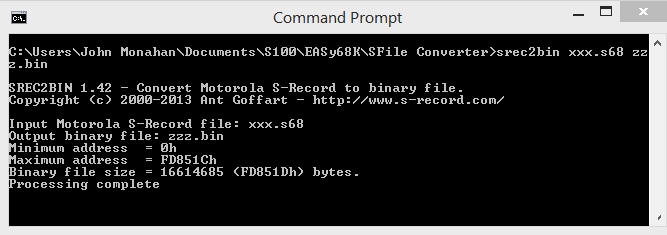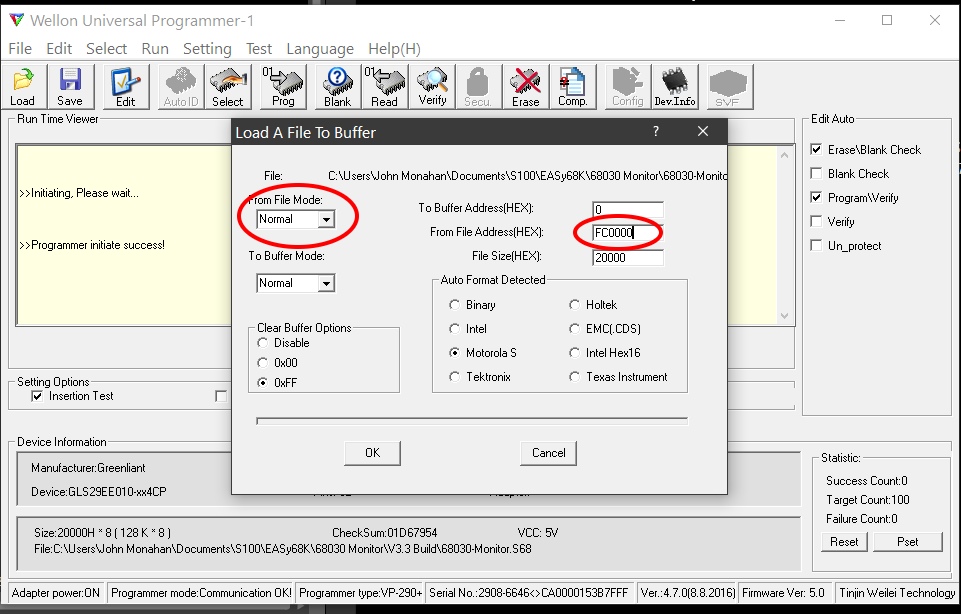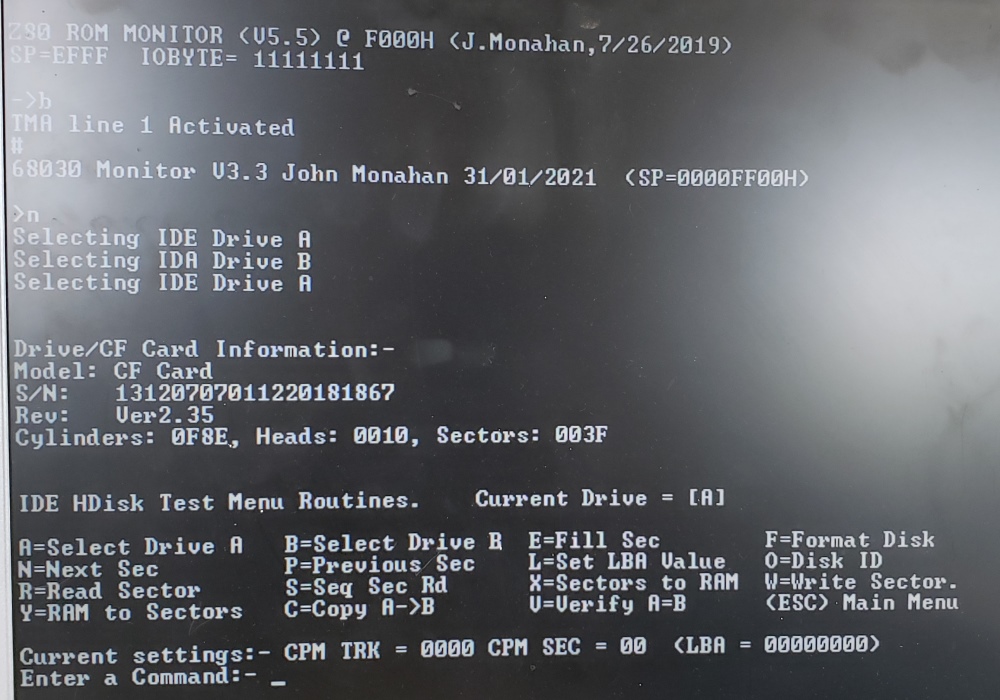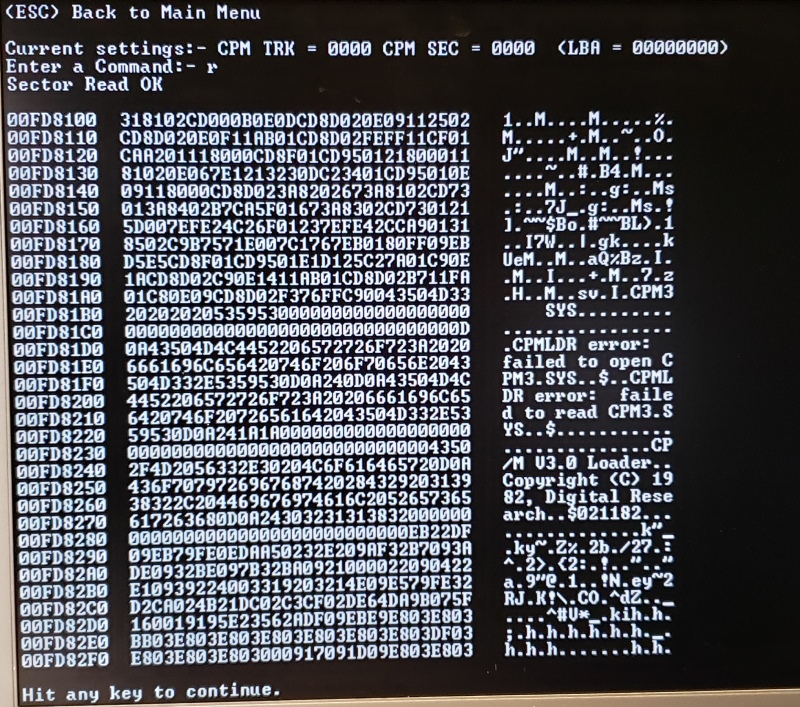Please note in its current
configuration the CF card software assumes up to 0FFH Tracks with
0FFH 512 byte
sectors/Track for all cards. This can be easily changed in the equates at
the beginning of the monitor, but it has the advantage that the Drive "Y" copy
command will copy any operating system from Drive A: to B: correctly (e.g.
CPM3 formats, CPM86 or MSDOS).
The links below will contain the most recent versions of the above software.
Note, it may change over time and may not correlate
exactly with the text in the article above.
EASY68K SOFTWARE
(11/14/2011)
SREC2BIN SOFTWARE
(5/3/2014)
MOST CURRENT VERSION OF THE
68030 MONITOR SOFTWARE.ZIP (V3.42) FILE
(V3.42 2/8/2021)
MOST CURRENT VERSION OF THE
68030 MONITOR SOFTWARE (Pdf File)
(V3.42 2/8/2021)
MOST CURRENT VERSION OF THE
68030 MONITOR SOFTWARE (Text File) (V3.42 2/8/2021)
This page was last modified
on
02/08/2021







